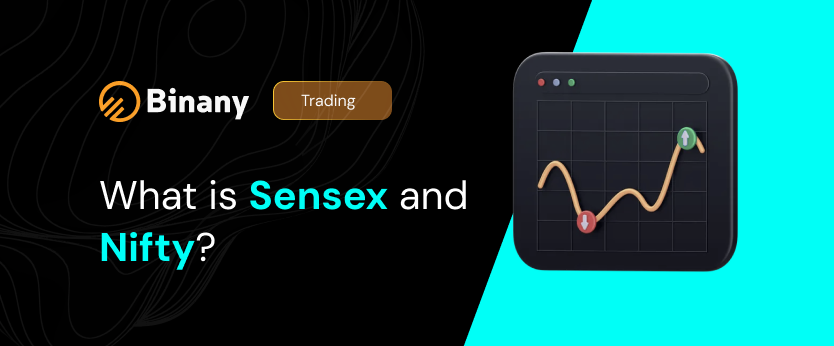Sensex vs Nifty: What is Nifty and Sensex? Key Differences Uncovered
SENSEX, established in 1986, is a vital index in India’s financial landscape, representing the 30 most stable companies listed on the Bombay Stock Exchange (BSE).

Derived from the words “Sensitive” and “Index,” SENSEX provides a snapshot of the overall market direction by tracking the performance of selected companies. Over the years, Sensex vs Nifty has become a popular comparison, with SENSEX evolving into more than just a financial tool—it represents the aspirations, economic potential, and dynamism of India. For those exploring what is Sensex and Nifty, SENSEX stands as a testament to India’s economic journey, reflecting its challenges, successes, and growth. It serves as a guide for investors navigating the complexities of the stock market, helping them make informed decisions. In the context of Nifty vs Sensex, SENSEX continues to highlight India’s path toward a vibrant financial future.
What is SENSEX
SENSEX is more than just a term in the financial lexicon; it serves as a vital barometer of India’s economic vitality and vigor. Representing 30 of the most robust companies listed on the Bombay Stock Exchange (BSE), SENSEX is often at the center of discussions about what is Sensex and Nifty and how these indices shape market dynamics. This index stands as a testament to corporate resilience and economic strength. But, what factors differentiate it in the context of Sensex vs Nifty, and what criteria govern the selection of these corporate giants?
A longstanding history on the BSE, symbolizing stability and prominence, is a pivotal criterion for inclusion. SENSEX provides a detailed view of India’s vibrant economy, making it a key point of comparison when analyzing Nifty vs Sensex. Beyond monetary figures, SENSEX tells the story of a nation advancing with economic resilience and untapped potential, projecting growth opportunities and guiding investors across the globe.
How to Calculate SENSEX
Understanding the method of calculating SENSEX provides a crystal-clear image of the market’s status at a particular moment, offering an analytical basis for making investment decisions.
Calculated through a methodology known as Free-float Market Capitalization-weighted method, SENSEX considers both the stock’s value and the number of available shares for trading without involving the locked-in shares held by promoters and stakeholders.
Here’s a simplified representation of the formula:
- SENSEX = (Sum of Free-float Market Capitalization of 30 companies / Index Divisor)
- The Index Divisor adjusts to maintain index continuity during corporate actions like stock splits and dividends.
To break it down further:
- Step 1: Find the free-float market capitalization of each company in the index.
- Step 2: Add up the free-float market capitalization values obtained in step 1.
- Step 3: Divide the total value obtained in step 2 by the index divisor to find the SENSEX value.
How to Invest in SENSEX
Investing in SENSEX can be a calculated venture when done with meticulous planning and execution. Here’s how you can approach it:
- Research and Education: Start with gaining a profound understanding of the SENSEX components and the market dynamics. Understand the constituents of SENSEX and how it functions.
- Choosing the Right Platform: Opt for a credible brokerage platform that facilitates seamless trading in SENSEX-related instruments, such as Exchange Traded Funds (ETFs) and Index Funds.
- Asset Allocation: Be prudent in allocating assets. A diversified portfolio that mimics the SENSEX can be a safer bet to start with, which incorporates various sectors represented in the index.
- Monitoring and Reviewing: Regular monitoring and reviewing of your investment is vital to keep up with market trends and make necessary adjustments to your portfolio.
- Professional Advice: For beginners, seeking professional advice can be beneficial to navigate the complex financial landscape effortlessly.
Conclusion
In conclusion, unraveling the intricacies of SENSEX serves as a stepping stone towards mastering the art of investment in the Indian financial market. Having dissected what SENSEX represents, the criteria for company selection, its calculation methodology, and investment avenues, one emerges equipped to venture into the vibrant financial landscape of India with a fortified understanding.

Financial writer and market analyst with a passion for simplifying complex trading concepts. He specializes in creating educational content that empowers readers to make informed investment decisions.

